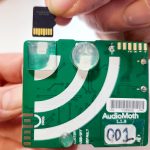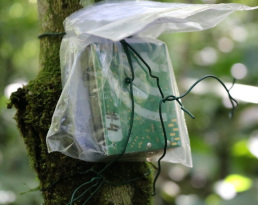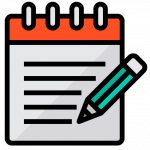Frequently Asked Questions
On this page you can find the answers to frequently asked questions about the Eclipse Soundscapes Project.
Did you receive my data?
As of June 5, 2024 all location notes and MicroSD cards received have been added to our database.
You can lookup your data status by ES ID# here. You can also use this table to find your data processing group number. The Data Progress by Group Number table will tell you which stage your data is in.
Why don’t I see my ES ID # on the list? Or, I submitted my SD card, why isn’t it marked as received on the list?
If you don’t see your ES ID # in the Data Receipt list, one of the following scenarios may apply to you:
- We never received your data. Unfortunately, we are unable to track the status of SD cards that may have been delayed in the mail.
- Your data cannot be identified. We received a handful of micro SD cards without an ES ID#, location information, or contact information.
Why don’t I see my audio site on the map?
If you don’t see your audio recording site on the map, it’s possible we never received your location notes. Please check the “Location Info Received” column of the Data Receipt List.
My audio site info is incorrect on the map, how can I correct it?
If the location associated with your ES ID # is incorrect on the map, there may have been an error with the formatting of your latitude and longitude. We appreciate you verifying that the latitude and longitude for your ES ID # is correct. If you notice an error, please report corrections using this form.
How do I determine if I’m in the path of totality for the April 8, 2024 eclipse?
Use our eclipse lookup tool to find out what percentage of eclipse will happen in your zip code.
Can I participate from outside the US?
Participation from outside the US is welcome. Parts of Canada and Mexico will also experience a total eclipse on April 8.
I signed up to be a data collector for the October, 2023 eclipse. Do I need to sign up again?
Yes, please sign up here to ensure you receive Data Collector updates for the 2024 total solar eclipse.
Can I use the AudioMoth device to record for both solar eclipses?


Can you send me an AudioMoth device? Or, I didn’t receive an AudioMoth device. What happened?
All free data collector kits from the Eclipse Soundscapes Project have been claimed and shipped. If you didn’t receive a kit, there are several possibilities:
- You did not fill out the application form, or you missed the January 2024 deadline. Signing up as a Data Collector does not automatically guarantee a free kit.
- You applied, but were not selected for a free kit. You should have received an email notifying you of your application status.
- You were offered a free kit, but failed to confirm your enrollment. We asked that participants confirm their mailing address and participation details before sending them a free kit.
We hope you will still consider participating as an Observer!
Can I build my own Data Collector Kit?
Absolutely! Required equipment for a Data Collector Kit includes an AudioMoth recording device (available from LabMaker), a waterproof plastic bag, 3 AAA batteries, zip ties, a 64 GB Extreme U3 MicroSDXC card, and a padded return envelope. Learn more here.
Can I record with a device other than an AudioMoth?
Unfortunately, no. All Eclipse Soundscapes protocols have been developed and tested for an AudioMoth device only. We can not accept other types of recordings. If you are not able to obtain an AudioMoth device, consider participating as an Observer.
Where should I set up my AudioMoth?
AudioMoths must be set up outdoors. We are interested in collecting animal, bird, and insect sounds — especially crickets! It’s okay if the location you choose has some people sounds, but try to pick an area where human generated noise (like lawnmowers and highway sounds) won’t dominate the audio recording. To learn more about collecting audio data visit the Data Collector Page.


Do I need to purchase a waterproof cover for my AudioMoth?
No, but we do recommend putting your AudioMoth in a plastic bag before deploying it outdoors. If you receive a free kit from Eclipse Soundscapes, a plastic bag will be included.
Can I record for less or more than five days?
More than 5 days: The batteries and SD Card for your AudioMoth have been tested to record for up to 7 days. If you need to set your AudioMoth out a day early or pick it up a day late, that is okay.
Less that 5 days: If you record for less than 5 days, we may not be able to use your data in our scientific analysis. However, another goal of our project is to build a repository of eclipse soundscapes for future scientific study and use. Your recording will still be considered very valuable, and we encourage you to submit it.
How do I set the time on my AudioMoth recorder?
Follow these steps to set the time on your AudioMoth recorder. If you’re still having difficulty, try removing and re-inserting the batteries.
If you see flashing red and flashing green in custom mode, then the AudioMoth will need to be flashed with firmware again. Please follow these instructions to flash the firmware. After you update the firmware to 1.8.1, you should be able to set the time.
Note: we ask all participants to write down and submit their recording start/end times, so we have a backup measure in place if you are unable to set your clock.
I'm outside the path of annularity/totality. Can I still record soundscape data or collect observations?
Yes! We are looking for data from partial eclipses as well as total/annular eclipses. You can find the maximum eclipse coverage for your area with our eclipse lookup tool.
Do I need to configure AudioMoth settings like gain, sample rate, etc.?
All AudioMoths in the Eclipse Soundscapes Project will record in DEFAULT mode. If you received an AudioMoth from Eclipse Soundscapes or purchased a new AudioMoth, you do not need to use the AudioMoth configuration App to edit any other settings.
If you are using an AudioMoth that you have previously changed the configuration for, you will need to restore it to the following defaults:
- Sample Rate: 48kHz
- Gain: Medium
- Continuous recording (Do NOT enable “sleep/record cyclic recording”)
What is my ES ID#, or how do I register for one?
If you received your AudioMoth from Eclipse Soundscapes (or one of our partners), it will already have an ES ID# on the device and on the device box.
If you purchased/own your own AudioMoth, you will need to register for an ID# here. Please see the page on ES ID #s for more information, including how to find your AudioMoth serial number.
What happens to my data? How do I know that you received it?
For 2023 participants: Use this table to look up your unique ES ID # and find your data status.
For 2024 participants: We will create a table for you to look up your data shortly after the eclipse.
Where will the data be stored/published?
We are still working on finding a home for our data to be stored, accessed, and listened to. We will post this information on EclipseSoundscapes.org as soon as it becomes available.
I’m hosting or facilitating an eclipse event. How can I engage my audience with Eclipse Soundscapes?


You can also encourage participants to share observations on social media using the hashtag #EclipseSoundscapes and their location. Event attendees do not need to take the Apprentice or Observer trainings to participate.
Do you have educational guides for educators, group leaders, etc.?
Yes, visit our Educator Resources page for lesson plans, do now activities, and other useful eclipse resources.